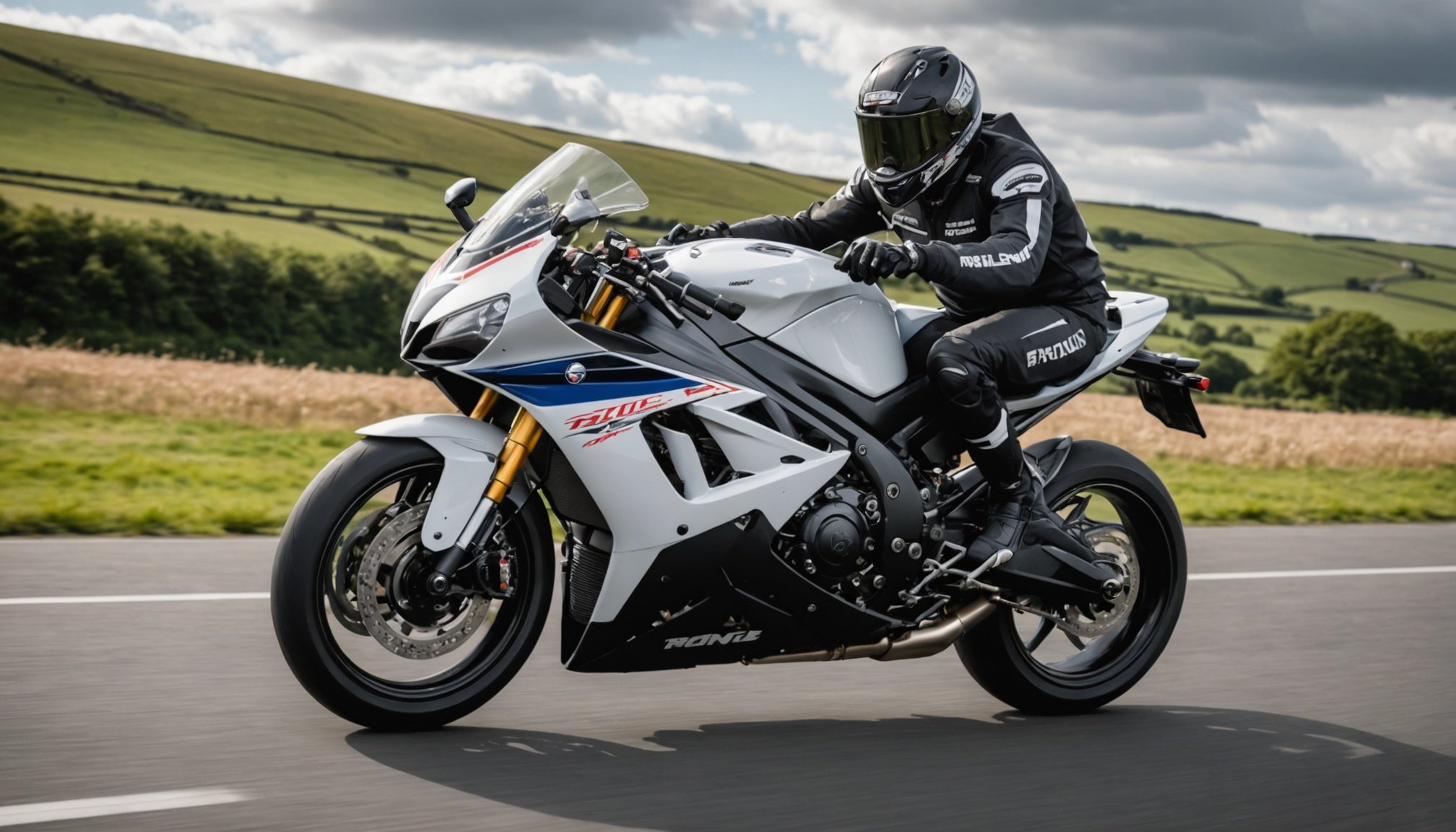Maximizing Performance: A Complete Guide to Tuning Your Sport Bike’s Fuel Mapping for the Ultimate UK Road Experience
Understanding the Importance of Fuel Mapping
When it comes to optimizing the performance of your sport bike, few aspects are as crucial as the fuel mapping. Fuel mapping is essentially the process of adjusting the amount of fuel injected into the engine to match various riding conditions, ensuring optimal power output, fuel efficiency, and overall riding experience.
Fuel injection systems, like those found in modern bikes such as the Triumph Trident 660 or the Ducati Streetfighter V2, use electronic fuel injection (EFI) to deliver the precise amount of fuel needed by the engine. This precision is vital for optimizing power output while minimizing emissions and enhancing fuel economy[4].
Also to discover : Essential Guide to Cleaning and Caring for Sport Bike Brake Calipers in the UK”s Harsh Winter Salt Conditions
Optimizing Rider Modes
Many modern sport bikes come equipped with multiple rider modes that adjust the fuel injection settings to suit different riding conditions. Here’s a breakdown of the typical modes you might find:
Sport Mode
- This mode provides a richer fuel map for maximum power output, which is ideal for spirited riding but may increase emissions.
- Example: The Ducati Streetfighter V2 in Sport Mode delivers aggressive power delivery, making it perfect for track days but less so for daily commuting.
Rain Mode
- This mode uses a leaner fuel map to reduce power and improve traction, which can also help in reducing emissions.
- Example: The Triumph Trident 660 in Rain Mode is designed to provide better grip on wet roads, making it safer and more manageable in adverse weather conditions.
Road Mode
- A balanced mode that offers a compromise between power and efficiency.
- Example: The Yamaha YZF-R1 in Road Mode provides a smooth power delivery, making it suitable for both city riding and highway cruising.
Regular Maintenance for Optimal Fuel Mapping
Regular maintenance is key to ensuring your fuel injection system operates efficiently. Here are some critical maintenance tasks:
In the same genre : Ultimate Guide to Adding Heated Handlebars to Your Sport Bike for Comfortable Riding in the UK”s Chilly Weather
Air Filter
- A dirty air filter can lead to poor engine performance and increased emissions. Make sure to replace it regularly.
- Tip: Check and replace the air filter every 10,000 to 15,000 miles, or as recommended by the manufacturer.
Fuel Injectors
- Clean or replace fuel injectors as needed to ensure they are spraying fuel correctly.
- Tip: Use a fuel injector cleaning kit periodically to maintain optimal performance.
Spark Plugs
- Worn-out spark plugs can affect engine performance and emissions. Replace them according to the manufacturer’s schedule.
- Tip: Spark plugs should typically be replaced every 16,000 to 20,000 miles, depending on the bike model.
Fine-Tuning Your Fuel Mapping
Fine-tuning your sport bike’s fuel mapping involves understanding how the system works, using the right tools, and adopting an eco-friendly riding style. Here are some steps and tips to help you achieve this:
Using the Right Tools
- Invest in a fuel tuning kit or software that allows you to adjust the ECU (Engine Control Unit) settings.
- Example: The KTM Super Duke 1290 can be tuned using the KTM PowerParts tuning kit, which allows for custom fuel maps to be uploaded to the ECU.
Adjusting Fuel Maps
- Adjust the fuel maps to match your riding style and conditions. For example, if you ride in hilly or mountainous areas, you may need a richer fuel map to compensate for the altitude.
- Tip: Use a dyno test to see how your adjustments affect the power output and torque RPM of your engine.
### Sample Fuel Map Adjustments
| Riding Condition | Fuel Map Adjustment |
|
|----------------------|
| High Altitude | Richer Fuel Map |
| Wet Roads | Leaner Fuel Map |
| Track Days | Richer Fuel Map |
| City Riding | Balanced Fuel Map |
Riding Style and Its Impact on Fuel Mapping
Your riding style can significantly impact the fuel efficiency and power output of your bike. Here are some tips to optimize your riding:
Smooth Acceleration
- Avoid sudden acceleration, as it can increase emissions and reduce fuel efficiency. Instead, use smooth and gradual acceleration.
- Example: When riding the Honda CBR1000RR, smooth acceleration helps in maintaining traction and reducing rear wheel spin.
Maintain Optimal Speed
- Riding at optimal speeds (usually between 40-60 mph) can help in reducing emissions and improving fuel economy.
- Tip: Use cruise control when available to maintain a constant speed, especially on long highway rides.
Use Gear Wisely
- Use the correct gear for the speed you are riding at to avoid straining the engine.
- Example: On the Kawasaki Ninja ZX-10R, using the right gear helps in optimizing power delivery and reducing fuel consumption.
Custom Tuning for Specific Bikes
Different sport bikes have unique characteristics that require distinct tuning approaches. Here are some specific recommendations:
Parallel Twin Engines
- Bikes like the Yamaha MT-07 with parallel twin engines benefit from a balanced fuel map that enhances mid-range torque.
- Example: A custom tune on the Yamaha MT-07 can improve its power delivery in the 4,000-6,000 RPM range, making it more enjoyable for daily riding.
V-Twin Engines
- Bikes like the Ducati Super Duke with V-twin engines often require a richer fuel map to compensate for the engine’s design.
- Example: The KTM Super Duke 1290 benefits from a custom tune that enriches the fuel map, especially in the lower RPM ranges, to improve torque and power delivery.
UK Regulations and Safety Considerations
When fine-tuning your sport bike’s fuel mapping, it’s essential to adhere to UK regulations to ensure safety and compliance.
Roadworthiness
- Any modification, including fuel mapping adjustments, must not interfere with the bike’s roadworthiness.
- Tip: Always consult with a professional mechanic or tuning service to ensure your modifications comply with UK safety standards.
Insurance and Warranty
- Ensure that any modifications do not void your insurance or warranty.
- Example: Some insurance providers offer specialized policies for modified bikes, so it’s crucial to inform them of any changes.
Community Support and Local Resources
Navigating the world of fuel mapping can be complex, but community support and local resources can be invaluable.
Online Forums
- Join online forums and local biking groups to share insights and learn from other riders.
- Example: The Ducati Owners Club UK has a dedicated forum where members share tips and advice on tuning and maintaining their bikes.
Local Tuning Services
- Many local shops specialize in sport bike tuning, offering expertise that can make a significant difference.
- Tip: Look for services that use the latest technology and have experience with your specific bike model.
Case Studies and Success Stories
Here are a few case studies that highlight the benefits of fine-tuning fuel mapping:
Ducati Panigale V4
- A Ducati Panigale V4 owner experienced improved lap times by fine-tuning the fuel map to optimize power delivery and torque.
- Quote: “The goal was to make the bike as efficient as possible without compromising performance. With the right adjustments and maintenance, any bike can become more eco-friendly,” says Jacopo Cerutti, the Aprilia rider who helped develop the Tuareg Rally[4].
Yamaha YZF-R1
- A Yamaha YZF-R1 owner improved fuel efficiency by adjusting the fuel map to match his daily commuting route.
- Example: By using a leaner fuel map during city riding, the owner reduced fuel consumption by 10%, making the bike more economical for daily use.
Practical Insights and Actionable Advice
Here are some practical tips to help you get started with fine-tuning your sport bike’s fuel mapping:
Start with Baseline Settings
- Begin with the manufacturer’s recommended settings and make gradual adjustments based on your riding style and conditions.
Use Data Logging
- Use data logging tools to monitor how your adjustments affect the bike’s performance.
- Tip: Tools like the KTM PowerParts data logger can provide detailed insights into your bike’s performance, helping you fine-tune the fuel map more accurately.
Test and Refine
- Test your adjustments on the road and refine them based on your feedback.
- Example: After making adjustments, take your bike for a test ride to assess the power delivery, traction, and overall riding experience. Make minor tweaks as necessary to achieve optimal performance.
Fine-tuning your sport bike’s fuel mapping is a multifaceted process that requires a deep understanding of how the system works, the right tools, and a bit of patience. By following these guidelines, using practical insights from real-world examples, and adhering to UK regulations, you can enhance your bike’s performance, improve fuel efficiency, and contribute to a more sustainable future.
As you embark on this journey, remember that every small adjustment can make a significant difference in your riding experience. Whether you’re a seasoned rider or just starting out, the key to maximizing performance lies in understanding and optimizing your bike’s fuel mapping.
### Summary of Key Points
- **Understand Rider Modes:** Adjust fuel maps according to riding conditions (Sport, Rain, Road).
- **Regular Maintenance:** Keep air filters, fuel injectors, and spark plugs in good condition.
- **Use the Right Tools:** Invest in fuel tuning kits or software.
- **Adjust Fuel Maps:** Tailor fuel maps to your riding style and conditions.
- **Riding Style:** Practice smooth acceleration, maintain optimal speed, and use gear wisely.
- **Custom Tuning:** Adjust for specific bike models (parallel twin, V-twin).
- **UK Regulations:** Ensure modifications comply with roadworthiness and safety standards.
- **Community Support:** Utilize online forums and local tuning services.
- **Test and Refine:** Use data logging and test rides to refine adjustments.











